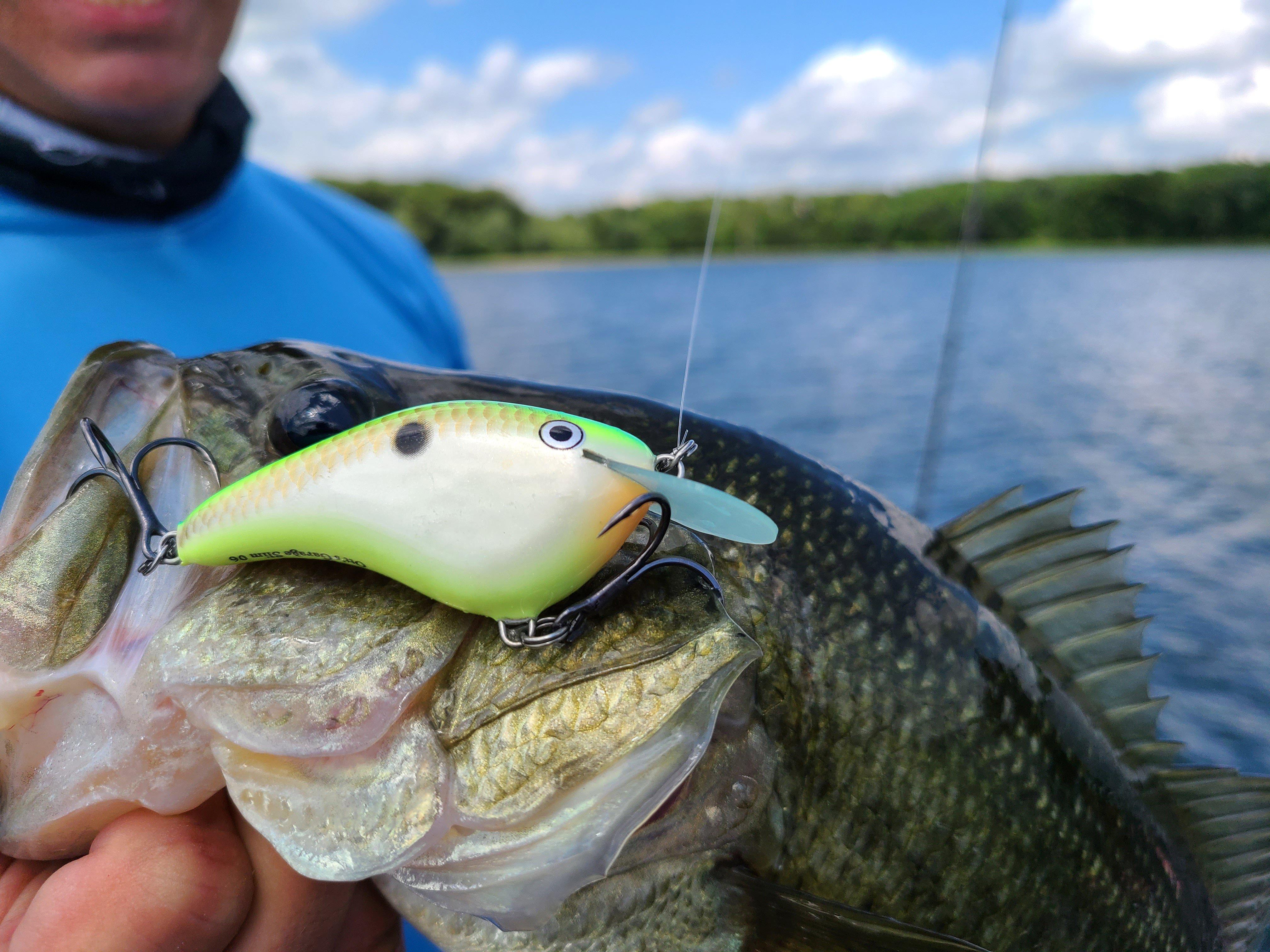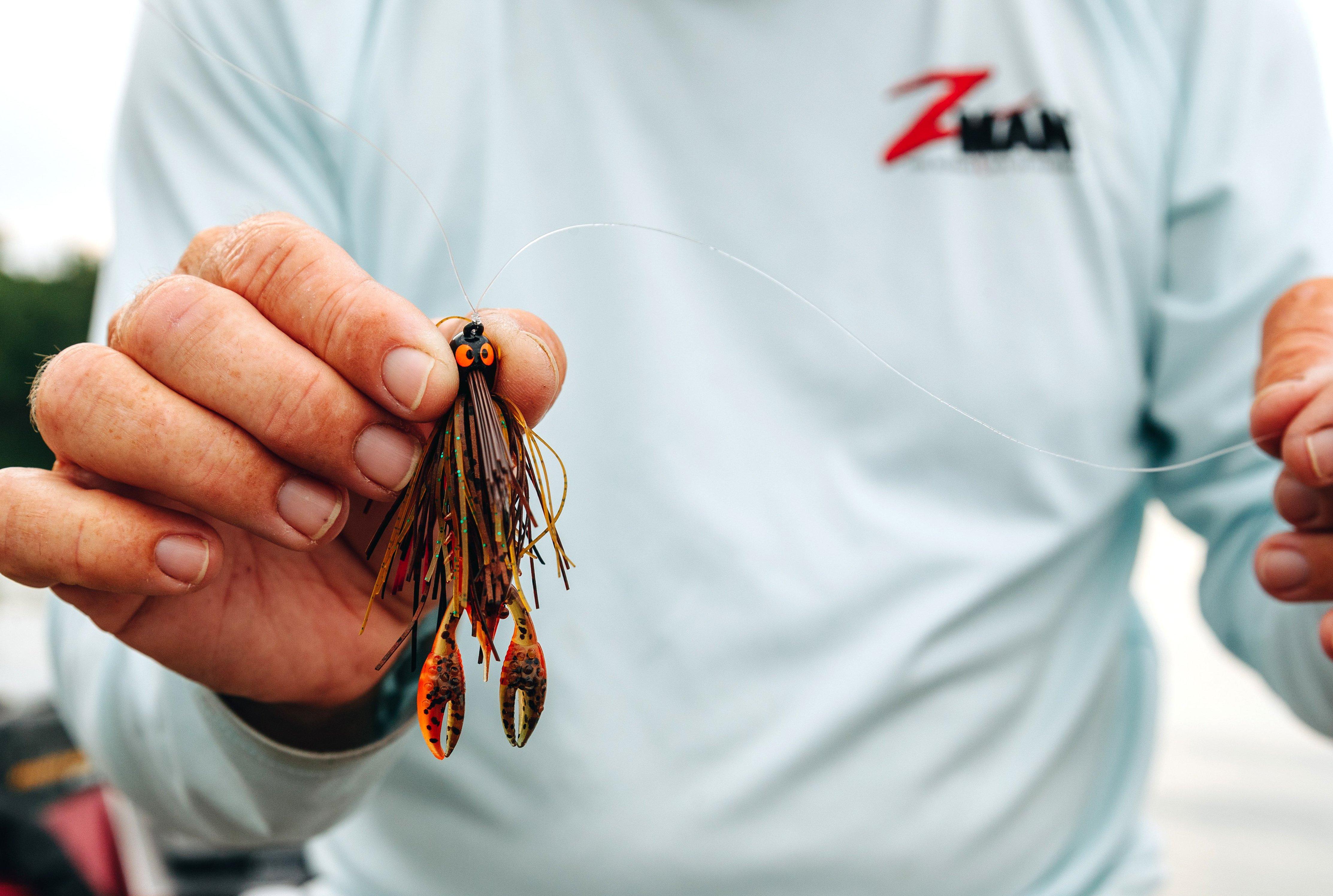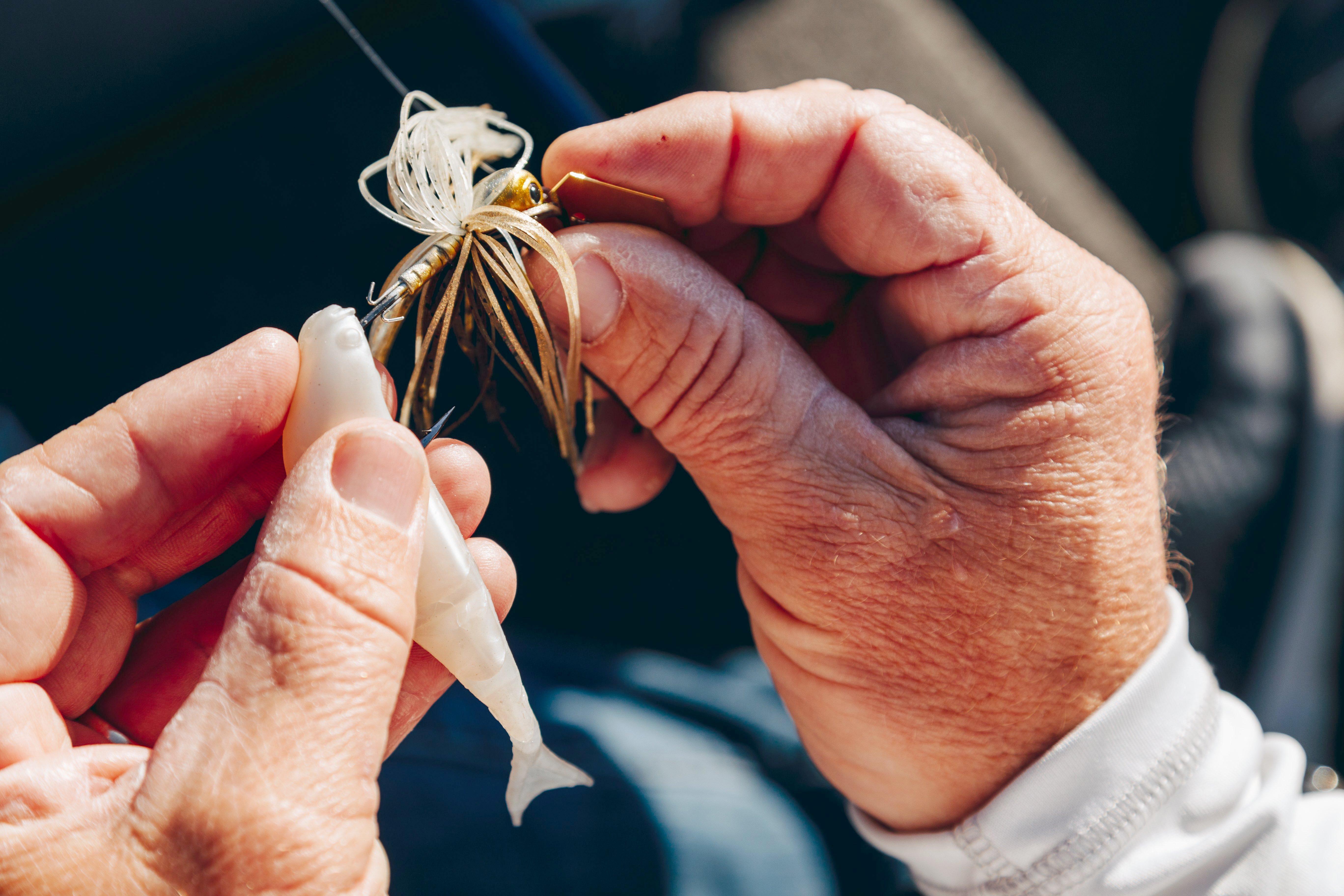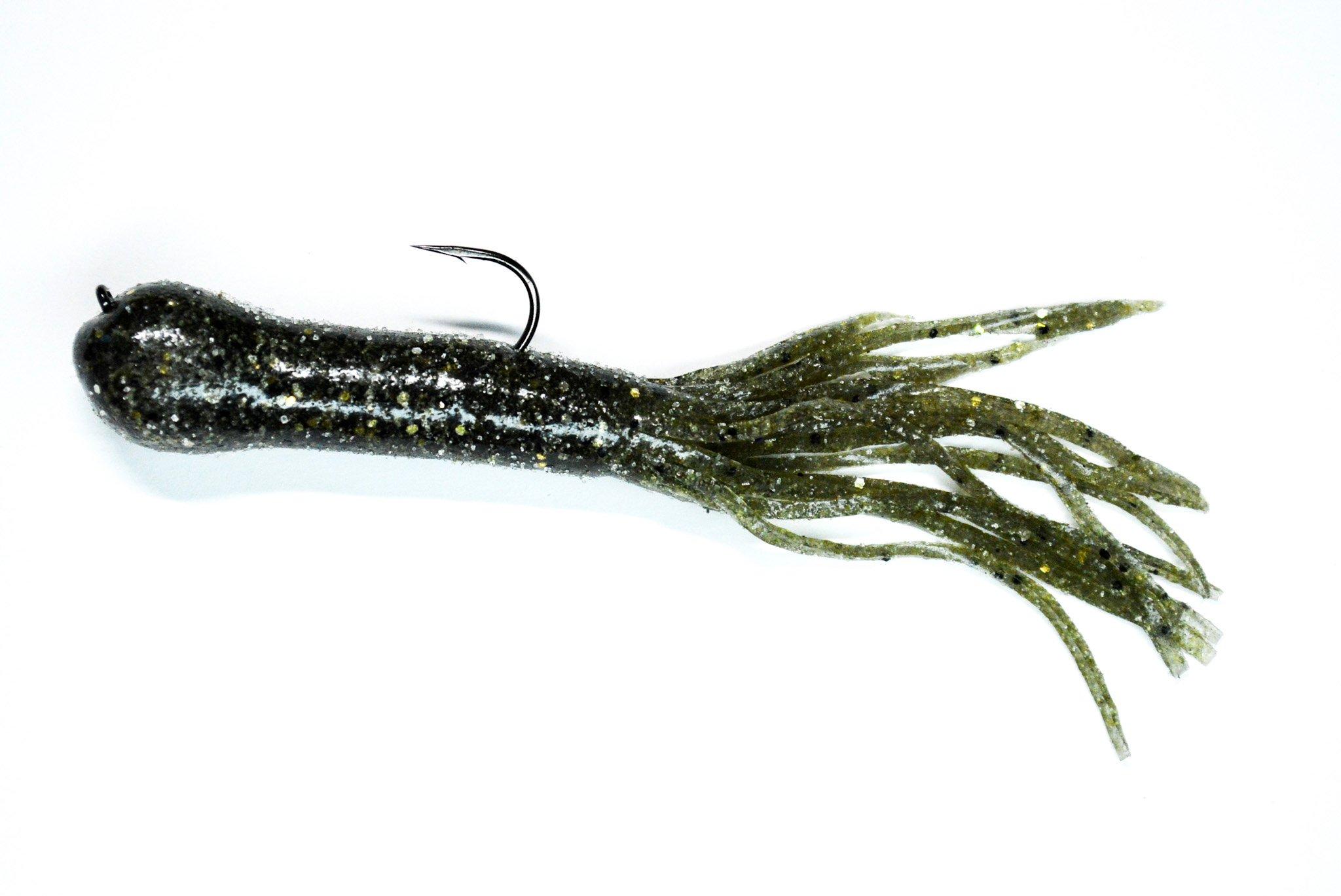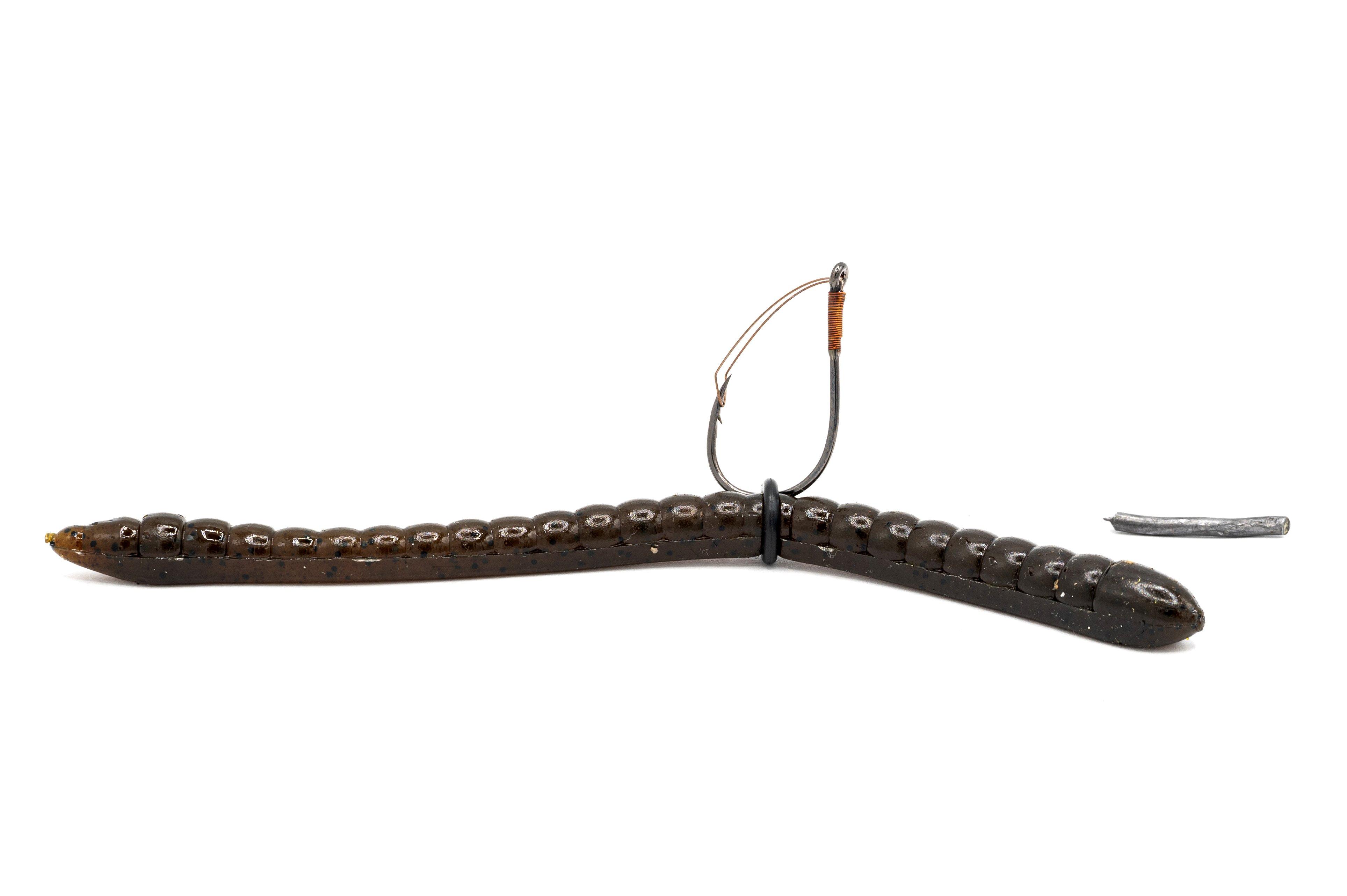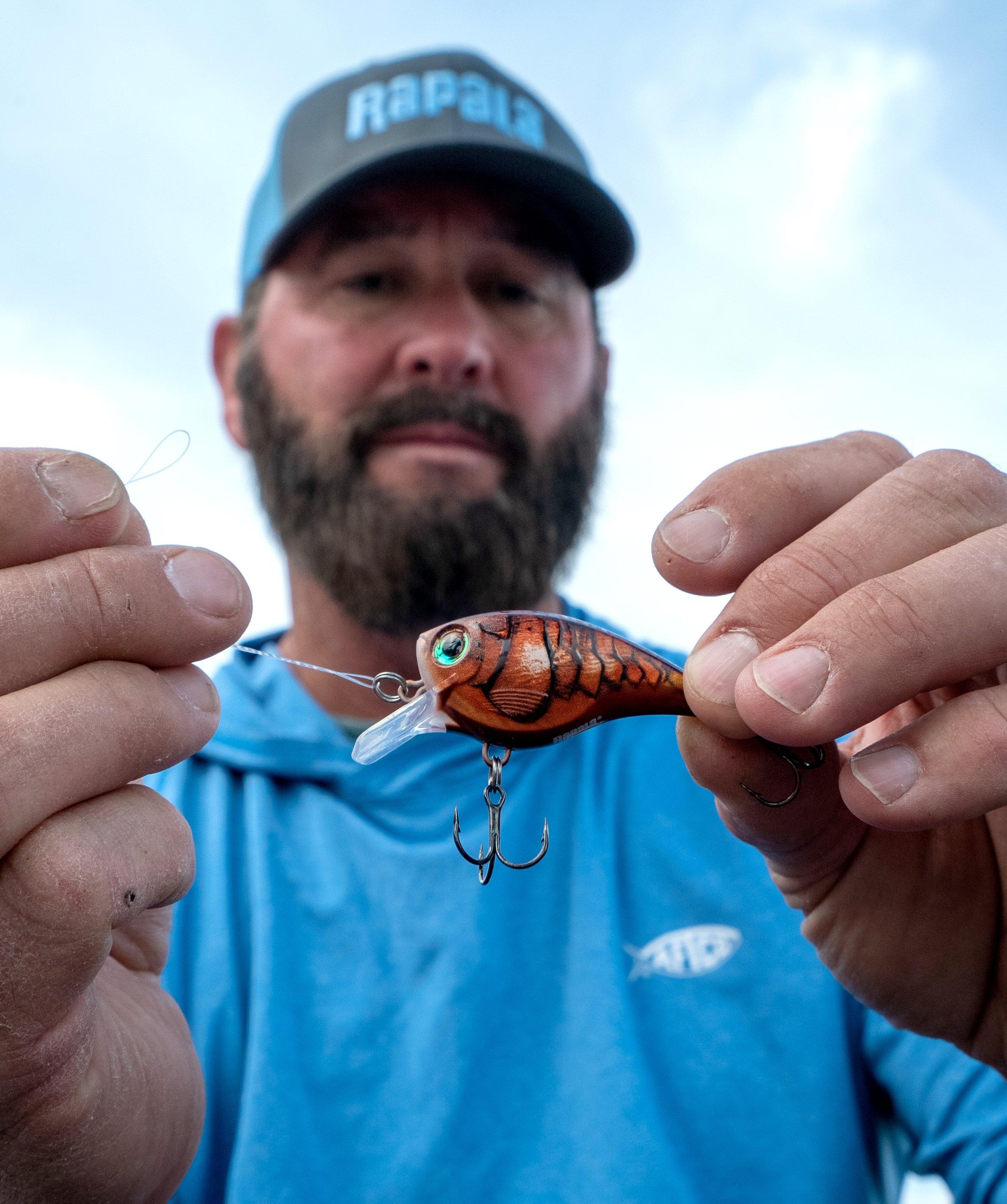It's tough to choose just five, but these mainstays will put bass in the boat regardless of where you're fishing
April is springtime everywhere. It's the end of the spawning bass season in Florida and the beginning of it in Minnesota. No matter where you go, bass should be cruising shallow water or on their way momentarily. There's no better time to make contact with a lunker.
My intention is to outfit you correctly by picking five can't-miss lures that will turn your springtime outing into a success. However, to do so, we'll have to divide things up a bit.
Springtime lures for Northern smallmouth will often differ from those of largemouth in other locales. Stick with me, though, and you'll find an offering that fits your home lake.
Jig and Trailer
OK, I said smallmouth lures will often differ from largemouth lures, but here's the exception. Every bass eats a jig. Largemouth and smallmouths, spotted bass, Alabama bass, mean-mouths — they all love a jig in spring. The reason is simple: No other lure better mimics a crawfish than a jig-and-trailer, in looks and action.
A flipping jig will work sometimes, but look for models with lighter weedguards and less bulk to shine through when the water's cold. Often labeled as casting or finesse jigs, the principle is the same. A skirted lead-head totes the trailer. These slimmer models will catch big largemouths, but they won't scare off smallies and spotted bass.
Start with a ¼-ounce jig, and pair it with a small plastic chunk or craw. The package will be about the size of a crankbait. Today's finesse jigs are deadly efficient, just as weedless as the big flipping models, and usually have superior hooks.
With compact jigs, it's best to lighten up on your tackle. Most anglers scale down to a spinning rod and braided line, though a balanced baitcasting rod is the better option. Try a 7-foot model in a medium-heavy power, and spool it with 15-pound fluorocarbon line. This outfit can cast and skip a compact finesse jig just about anywhere, and it has the muscle to bring a good bass out from under a dock or laydown.
Jig and trailer colors should match your locale. Up North, green pumpkin is king. Brown and orange is often tops in Mid-South reservoirs. And in Florida, you can't beat black and blue.
(Don't Miss: Shallow-Water Fall Bass Tactics)
Chatterbait
By now, you own as many chatterbaits as any other lure category. Why? Because this bait simply catches bass. Since its release in the early 2000s, the chatterbait has revolutionized bass fishing by combining the wobble of a crankbait with the weedless characteristics of a jig, with a touch of flash for even more appeal.
A chatterbait is tops in spring, when shallow bass are on the prowl and post up on just about any form of cover. The lure covers water exceptionally well and rarely snags. In fact, a chatterbait is so effective this time of year that a handful of pro anglers throw nothing else in spring, and they collect checks at nearly every tournament.
Granted, there's more to fishing a chatterbait than just keeping it wet. In early spring, stick to lighter models that can be retrieved slowly without dragging bottom. Think slow rolling, in spinnerbait terms. Pair with a trailer that doesn't overdo it in action, such as a single-tail grub or shad bait. The keys are to fish around shallow cover and keep the bait moving, but not at a speed that prohibits sluggish bass from taking a shot.
As waters warm and pre-spawn bass increase their activity, match that surge by covering water with a larger lure and busier trailer. That's the time to target big fish around isolated pieces of cover; a big stump, cypress tree or dock post in the back of a creek might hold a bruiser. On lakes with grass, look for submerged beds in 4 to 8 feet, or reeds or pads around spawning areas. A chatterbait fits the bill for all of these scenarios. The key in spring is to wind the bait slowly, maintain a steady pace and keep moving.
(Don't Miss: Advanced Tips for Bass Fishing Boat Docks)
Tube
Here, I'm going old school in the smallmouth department. As much as I don't want to admit it, and even with all the advancements in bass fishing lures recently, a tube still catches more big brown bass in spring than anything else.
The lure is still responsible for the bulk of Great Lakes smallmouths in April and May, but it appeals equally to smallies through the Mid-South. A 4-inch tube in green pumpkin paired with a jighead weighing somewhere close to a quarter-ounce gets the job done today as well as it did 30 years ago.
I've often believed the secret to the tube jig is random fall. Spiraling and sashaying its way to the bottom, a tube never falls the same way twice, and that's hard for bass to get used to. It's a trophy bass bait in the world of smallmouth. In fact, two of my five largest smallmouth bass — each exceeding 7 pounds — were caught on tube lures.
When fishing a tube, it's important to always rig the lure with an internal jighead, not Texas-rigged. The secret to the action lies in the weight being inside the lure, and taking that out of the equation simply leaves you with a goofy-looking plastic worm.
Stick to natural colors, and fish the bait around rocky shorelines and deep points, or on main-lake humps where pre-spawners might group. Don't think of a tube as a Great Lakes-only bait, either. Big catches of smallmouth bass are made around Kentucky Lake with a tube jig, as well as down the Tennessee River impoundments. It's a phenomenal lure for hook-to-catch ratios, too; a big plus for tournament anglers.
Fish a tube on a spinning rod spooled with 20-pound braid and a sizable leader of 8-pound fluoro. Drag the lure on the bottom, and sub in light hops from time to time, always maintaining contact with the lake's floor. If you see a fish on your graph below the boat, drop a tube straight down on it. You might be surprised by how effective that technique can be.
(Don't Miss: Why You Suck at Throwing a Baitcaster)
Wacky Worm
I'm going to stretch this out a bit to include Neko rigs, Damiki rigs, Senkos, stickbaits and old-fashioned wacky worm rigs from years ago. The concept, really, is the same. Stick a hook through the middle of a worm, add some weight to one end if you'd like, and cast around ultra-shallow targets.
I remember when professional anglers marveled at the "tourist rig when wacky worms first came on the scene. The thought of intentionally hooking a plastic worm incorrectly, and the fact that the new rig worked so well, was more than a few respectable bassers could handle. But boy, did it catch fish.
The secret to weightless and wacky worms is in their seductive fall. Many wobble slightly on the descent. The Senko made a name for itself by perfecting that nearly inconceivable wiggle, and bass eat them by the bagful as a result.
These soft baits shine immediately before and after the spawn, when fishing can get a little tough, as bass are more interested in their nesting chores than eating. Ease along slowly, and cast the worm at any visible cover items in the extreme shallows. Skip the bait under docks. Toss it up along seawalls, and don't overlook a drain pipe or tree root dipping in the water off the bank. Shallow willow bushes can be great, as well as riprap shorelines.
It's important to let the worm do the work. Making accurate casts to objects, let the worm fall slowly all the way to the bottom. Give a couple of high, quick jerks, and allow the bait to fall again. No bite? Reel in and throw to the next target. The falling worm imparts its own action. You're just there to deliver it.
Spool a spinning rod with a braid/fluoro combo, and stick with a small hook made for this technique. If Neko rigging, insert a nail weight into one end of the worm. The produces a quicker, straight-down fall, and allows more precise, and sometimes deeper, presentations.
(Don't Miss: 3 Best Lures for Catching a 10-Pound Bass)
Shallow Crankbait
In many parts of the country, springtime is crankbait season. Square-bills and flat-sided baits shine in cold water when fish move toward the banks. Waterways with a bit of stain and hard cover — rocks, wood and boat docks — are shallow crankbait havens, as the lures deflect well off objects and put out a seductive call through wobbles and rattles.
Flat-sided baits are particularly good in lakes, rivers and reservoirs containing high populations of shad. Shad, especially the threadfin variety, are prone to winter die-off. As water temps dip into the 40s, many of these baitfish take their last breaths, creating a smorgasbord for area bass. Often, largemouths gorge themselves on the easy meals.
Flat-sided cranks mimic these lethargic shad perfectly, combining a tight wiggle with a critical level of flash, especially when the lure deflects off cover. That's the key to fishing cranks — deflection — and it's imperative here.
Lighten up a bit on your crankbait gear when fishing flat-sides. A 7-foot medium-light rod combines well with 12-pound fluorocarbon, and it allows for accurate casts around cover. Stick to a medium, bumping retrieve, and pause when the lure careens off of a target. Repeated casts to objects are often key.
Custom flat-sided baits originated in the country's midsection. Anglers in Tennessee and North Carolina hand-carved and tuned lures out of a variety of woods, producing one-of-a-kind fish catchers that would fetch $20 apiece back in the '80s. Today, several mass-produced models work just as well.
Square-billed crankbaits work in the same section of water but fill a different role from flat baits. Square-bills are the workhorses; capable of covering massive amounts of water staying almost snag free, and plucking big 'uns from warmer, dirty water.
Square-billed cranks really came on the scene in the early 2000s when pro anglers substituted them for their trusty spinnerbaits and found pressured, shallow bass willing to bite. The lures cast well and handle heavy gear. Here, start with 17-pound line, and go to 20 when after trophy fish. Heavy baitcast outfits prevail.
Fishing a square-billed crankbait is similar to using a chatterbait. Keeping the lure moving, but not overpowered, leads to the best results. Again, pause when the lure makes contact with cover, but encourage it to do so, again and again.
In spring, use crawfish-colored square-bills. Reds and oranges, or fire craws as they're called, work best in the stained water where square-bills prevail.
Big Five
To pick just five lures for springtime bass fishing is tough, especially considering the diversity of fisheries across North America. I left out the ultra-cold fish catchers such as spoons, blade baits, hair jigs and the like. And I had a hard time omitting jerk baits, as they continue to be an underrated lure in many parts of the country.
But the five lures covered here, if mastered and fished accordingly, will definitely put bass in your boat this month, regardless of where you fish. It's a great time to be on the water — maybe the best of the year. Now let's make it happen.
(Don't Miss: 5 Favorite Fall Fishing Bites)

